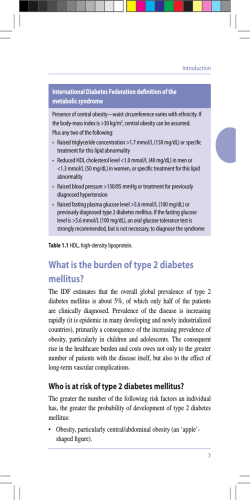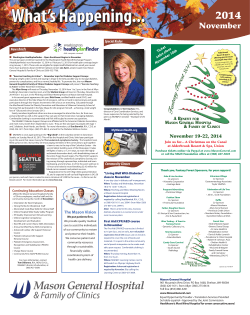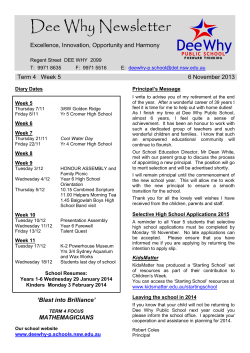
[ PDF ] - journal of evidence based medicine and
CASE REPORT SEARCH TO FIND OUT CAUSE OF COMPLICATIONS OF DIABETIC PATIENT WHO WENT ON VENTILATOR AFTER OPEN CHOLECYSTECTOMY Baheti Sandip1 HOW TO CITE THIS ARTICLE: Baheti Sandip. ”Search to Find out Cause of Complications of Diabetic Patient who went on Ventilator after Open Cholecystectomy”. Journal of Evidence based Medicine and Healthcare; Volume 1, Issue 15, December 15, 2014; Page: 1969-1972. ABSTRACT: Diabetes is very common now-a-days. Incidences of diabetes are increasing day by day. If not managed properly it is a slow killing disease. Its detrimental effects on various organs are not revealed clinically during initial course of disease. Tendency of patients to take diabetes casually makes this disease more complicated. Because of tendency of patients to change physicians frequently, it is difficult for subsequent physicians to judge overall course of diabetes and its control. Fifty years old obese patient with ASA II was posted for open cholecystectomy. Intraoperatively blood pressure rose to 160/100 but managed with iv sedation midazolam and little increasing concentration of isoflurane. Total procedure was uneventful. Reversal started after slight attempt of respiration but even after reversal tone of muscle was inadequate. Additional dose of 0.75 mg of iv neostigmine was tried, but it was not helpful. Tone of muscles and respiration was not adequate to extubate. Dose of calcium gluconate was also tried but was not helpful. Adequate time was also given for spontaneous recovery but was not helpful. Decision to shift patient on ventilator on SIMV mode was taken. Additional dose of midazolam 2 mg was given. Patient came out of ventilator after 10-12 hrs later. After thorough search of cause, neostigmine tablet was found at his home- which patient was considering as tablets to decrease blood sugar level i. e. OHD. All this happened due to change in physician. New physician told him to stop all OHD and shifted him on insulin. Patient stopped neostigmine tablet also considering it as OHD. WHY NEOSTIGMINE WAS STARTED? WHERE WAS GAP DURING HISTORY TAKING? -> KEYWORDS: Diabetes, diabetic myopathy, history taking error. CASE HISTORY BEFORE COMPLICATION: 50 yrs/ M diabetic patient came to Pune from his native place at his son’s house for surgery (open cholecystectomy). ASA II with airway MP II-III, Vitals within normal limits K/C/O DM since 8-9 yrs on OHD Family history: Not significant Past history: Not significant Drug history: Patient was on OHD but shifted on insulin for surgery since last 15 days J of Evidence Based Med & Hlthcare, pISSN- 2349-2562, eISSN- 2349-2570/ Vol. 1/Issue 15/Dec 15, 2014 Page 1969 CASE REPORT Investigations: Haemogram RFT, LFT, SE, urine routine, chest X-ray, ECG- all within normal limits and BSL under control. With tight control of BSL. Reversal: Neostigmine 2.5 mg+ glycopyrolate 0.4 mg. Even after reversal tone was inadequate. Top-up dose of 0.75 mg was given- no improvement. Dose of calcium gluconate was given- no improvement. Other causes of inadequate tone ruled out. Patient shifted in ICU on SIMV mode. After 10-12 hrs, patient came out with good muscle tone. CASE HISTORY AFTER COMPLICATION: After patient came out of ventilator, to find out cause, we asked realtives to bring all his drugs which he was taking in past. In that drug box, tablet neostigmine was found. WHY PATIENT WAS ON NEOSTIGMINE? STORY WAS AS FOLLOWS: Patient was taking treatment for his diabetes from his physician at his native place. One day he developed ptosis and went to physician. Physician told that it is due to diabetes and started tablet neostigmine. Physician did not explain that it is DIABETIC INDUCED MYOPATHY. Patient considered neostigmine as antidiabetic drug to decrease blood sugar. Patient came to Pune at his son’s house for getting operated. Pune surgeon referred him to Pune’s physician. Physician asked him to stop all OHD and started insulin. Patient stopped all oral tablets including neostigmine. During pre-operative evaluation by anaesthesiologist, patient told that he is on insulin and stopped all OHD and did not have drug with him. DISCUSSION: Diabetes is sweet and slow killing poison if not treated early. Even if controlled properly, 40% of diabetics who controlled their blood sugar nevertheless developed complications.1 However, one study which continued for 41 months found that the initial worsening of complications from improved glucose control was not followed by expected improvement in complications. Chronic elevation of blood glucose level led to damage of blood vessels. The endothelial cells lining the blood vessels take in more glucose than normal, since they do not depend upon insulin. They then form more surface glycoprotein than normal and cause the basement membrane to grow thicker and weaker. Thus lead to microvascular and macrovascular disease.2,3,4 J of Evidence Based Med & Hlthcare, pISSN- 2349-2562, eISSN- 2349-2570/ Vol. 1/Issue 15/Dec 15, 2014 Page 1970 CASE REPORT Familial clustering of the degree and type of diabetic complications indicate that genetics also play a role in causing complications5,6 In addition, MUSCLE PROGENITOR CELL POPULATION is affected. Both DM I and DM II affect muscle resident progenitor cell including SATELLITE CELL. Satellite cells are critical for muscle health and affected by DM at varying stages of adult mayogenesis.7,8 Chronic low grade inflammatory profile (CLIP)/ oxidative stress/ and impaired extracellular matrix remodeling is also underlying cause. In terms of pathophysiology, studies show that the two main types of DM (DM1 and DM2) cause a change in balancing of metabolites such as carbohydrates, lipids and blood coagulation factors, and subsequently bring about complications. DIAGRAM: Unlike other diabetic complications, muscle myopathy remains sub-clinical or may be revealed late. CONCLUSION: Even if blood sugar level of diabetic patients is well in control, there are chances of diabetic complications. Sub-clinical pathies should be kept in mind. History taking should accompany to actually see drugs which patient is taking. One must go through drugs taken by patient in recent past. Physician should explain which drug is prescribed for what purpose and for which complication. Frequent change in physicians should be avoided by patient. J of Evidence Based Med & Hlthcare, pISSN- 2349-2562, eISSN- 2349-2570/ Vol. 1/Issue 15/Dec 15, 2014 Page 1971 CASE REPORT BIBLIOGRAPHY: 1. M. Centofani, "Diabetes Complications: More than Sugar?" Science News, vol. 149, no. 26/27, Dec. 23–30, p. 421 (1995) Taubes G (October 2008). “Diabetes. Paradoxical effects of tightly controlled blood sugar”. Science 322(5900): 365-7. Doi: 10.1126/science.322.5900.365 2. "Diabetes Complications". Diabetes.co.uk. 3. Taubes G (October 2008). "Diabetes. Paradoxical effects of tightly controlled blood sugar". Science 322 (5900): 365–7. doi: 10.1126/science. 322.5900.365. PMID 18927369. 4. Brinchmann-Hansen O, Dahl-Jorgensen K, Hanssen KF, Sandvik L (September 1988). "The response of diabetic retinopathy to 41 months of multiple insulin injections, insulin pumps, and conventional insulin therapy". Arch. Ophthalmol. 106 (9): 1242–6. doi: 10.1001/archopht.1988.01060140402041. PMID 3046587 5. Monti MC, Lonsdale JT, Montomoli C, Montross R, Schlag E, Greenberg DA (December 2007). "Familial risk factors for microvascular complications and differential male-female risk in a large cohort of American families with type 1 diabetes". J. Clin. Endocrinol. Metab. 92 (12): 4650–5. doi: 10.1210/jc.2007-1185. PMID 17878250. 6. Rich SS (February 2006). "Genetics of diabetes and its complications". J. Am. Soc. Nephrol. 17 (2): 353–60. Doi: 10.1681/ASN.2005070770. PMID 16394110. 7. D’Souza DM, AI-Sajee D, HawKETJ US national library of medicine. National institute of health, Dec 2013 Diabetic myopathy, Impact of DM on skeletal muscle progenitor cells. 8. Argano M Matrocolar, Catalanon G, Brignardello E. Donnio, Bocuzzi G(2004), oxidative trace impairs skeletol muscle repair in diabetic rat- Diabetes 53.1082-1088.10.2337/diabetes 53.4 1082 [Pubmed][croos/Reg]. AUTHORS: 1. Baheti Sandip PARTICULARS OF CONTRIBUTORS: 1. Associate Professor, Department of Anaesthesiology, MIMER Medical College. NAME ADDRESS EMAIL ID OF THE CORRESPONDING AUTHOR: Dr. Baheti Sandip, Associate Professor, Department of Anaesthesiology, MIMER Medical College. E-mail: sandipbaheti1@gmail.com Date Date Date Date of of of of Submission: 10/12/2014. Peer Review: 11/12/2014. Acceptance: 12/12/2014. Publishing: 15/12/2014. J of Evidence Based Med & Hlthcare, pISSN- 2349-2562, eISSN- 2349-2570/ Vol. 1/Issue 15/Dec 15, 2014 Page 1972
© Copyright 2025

















